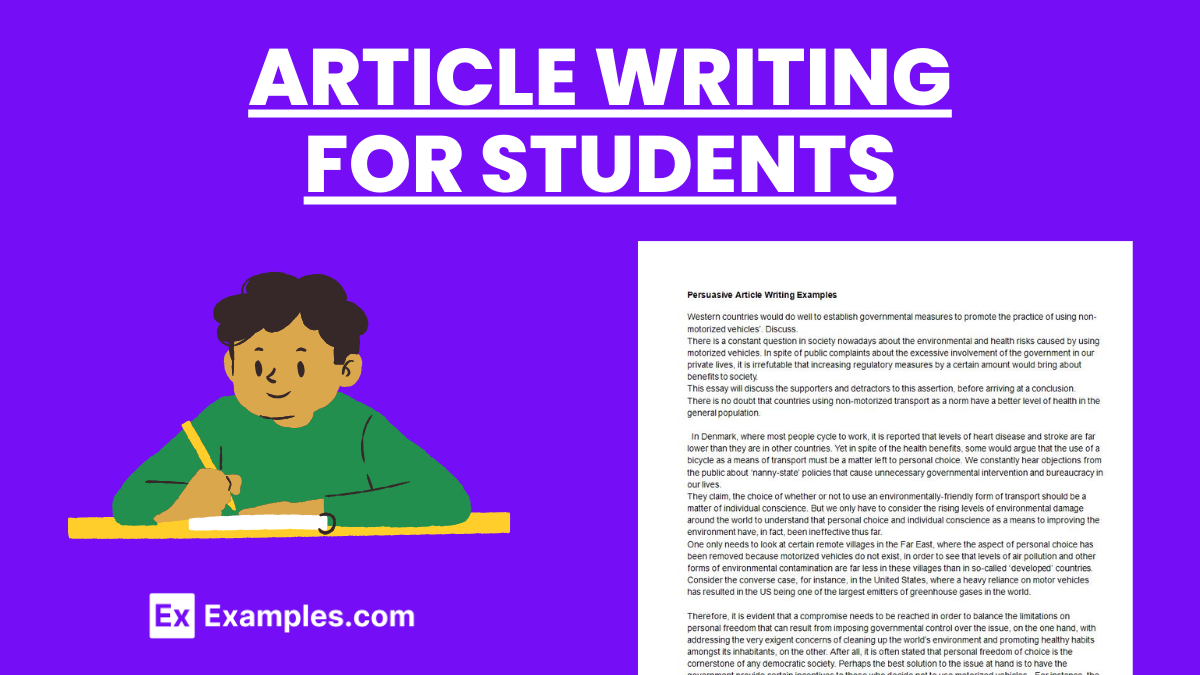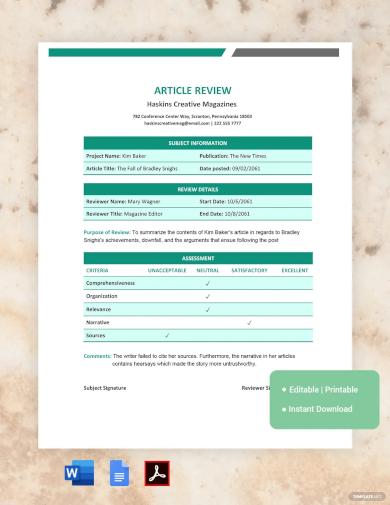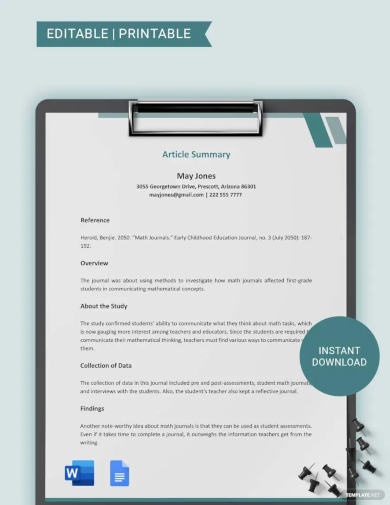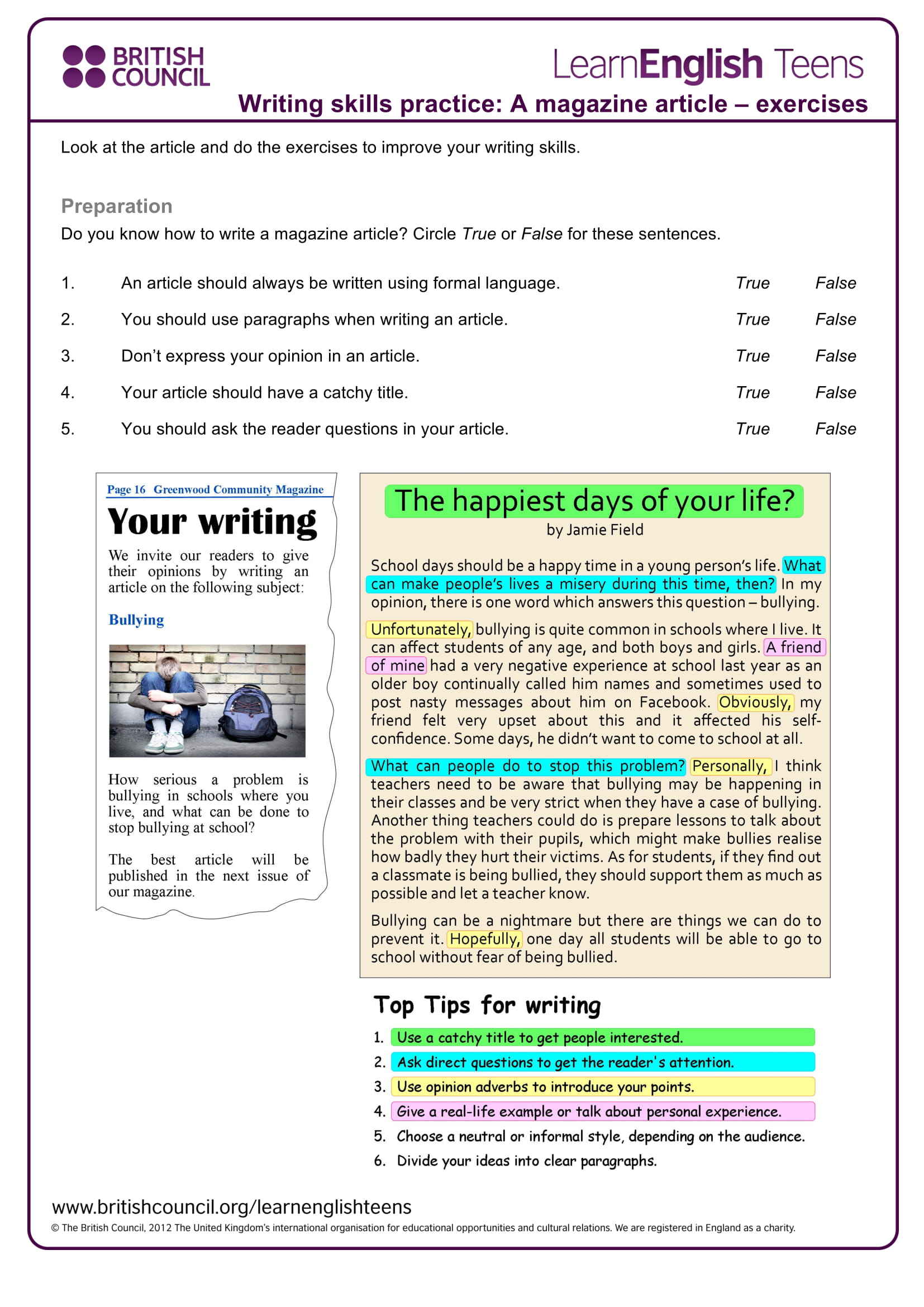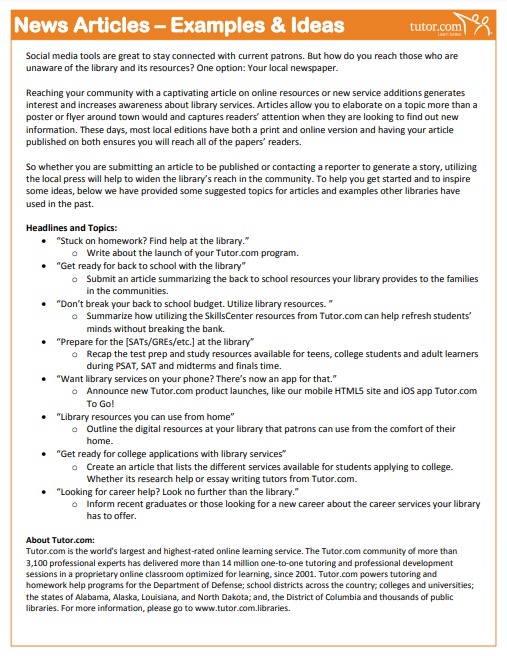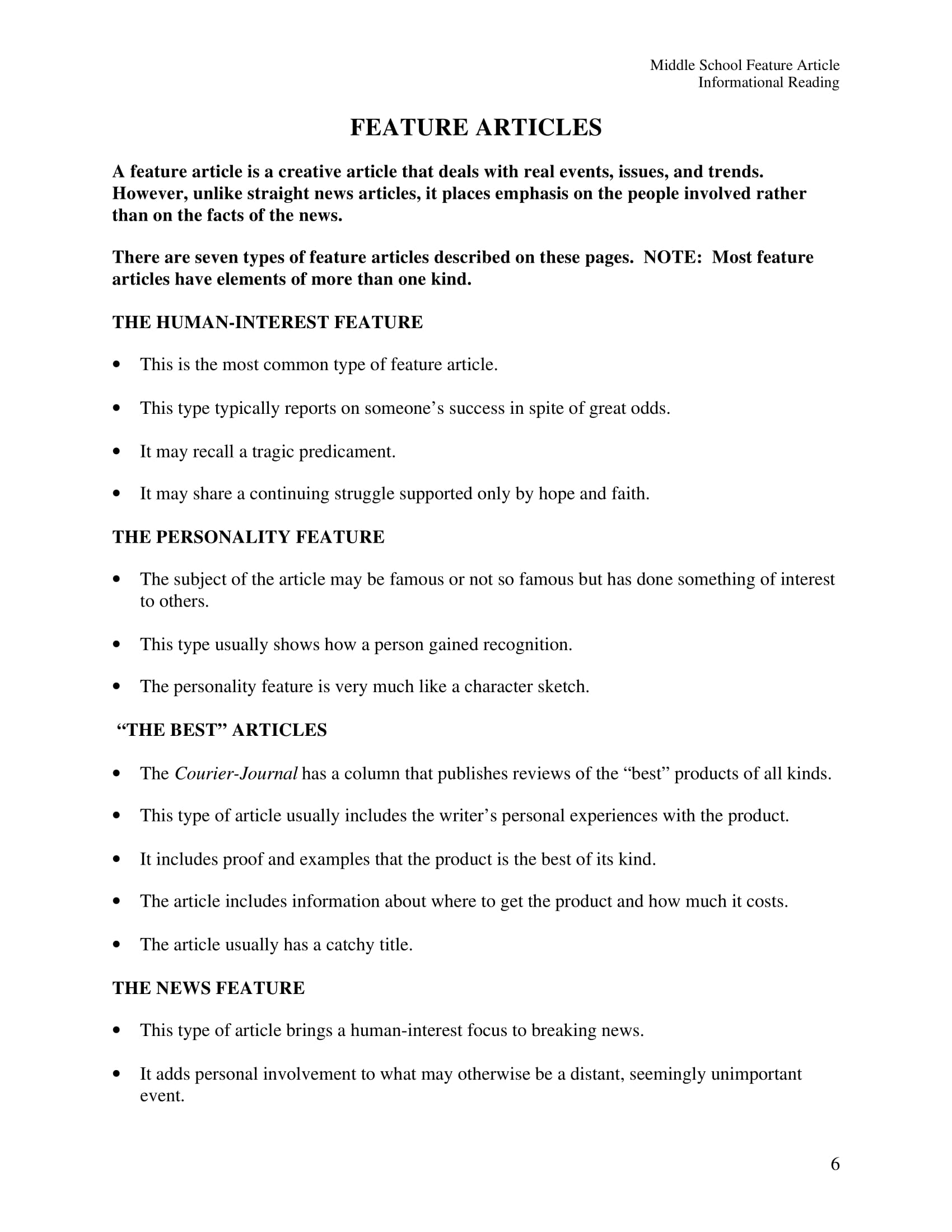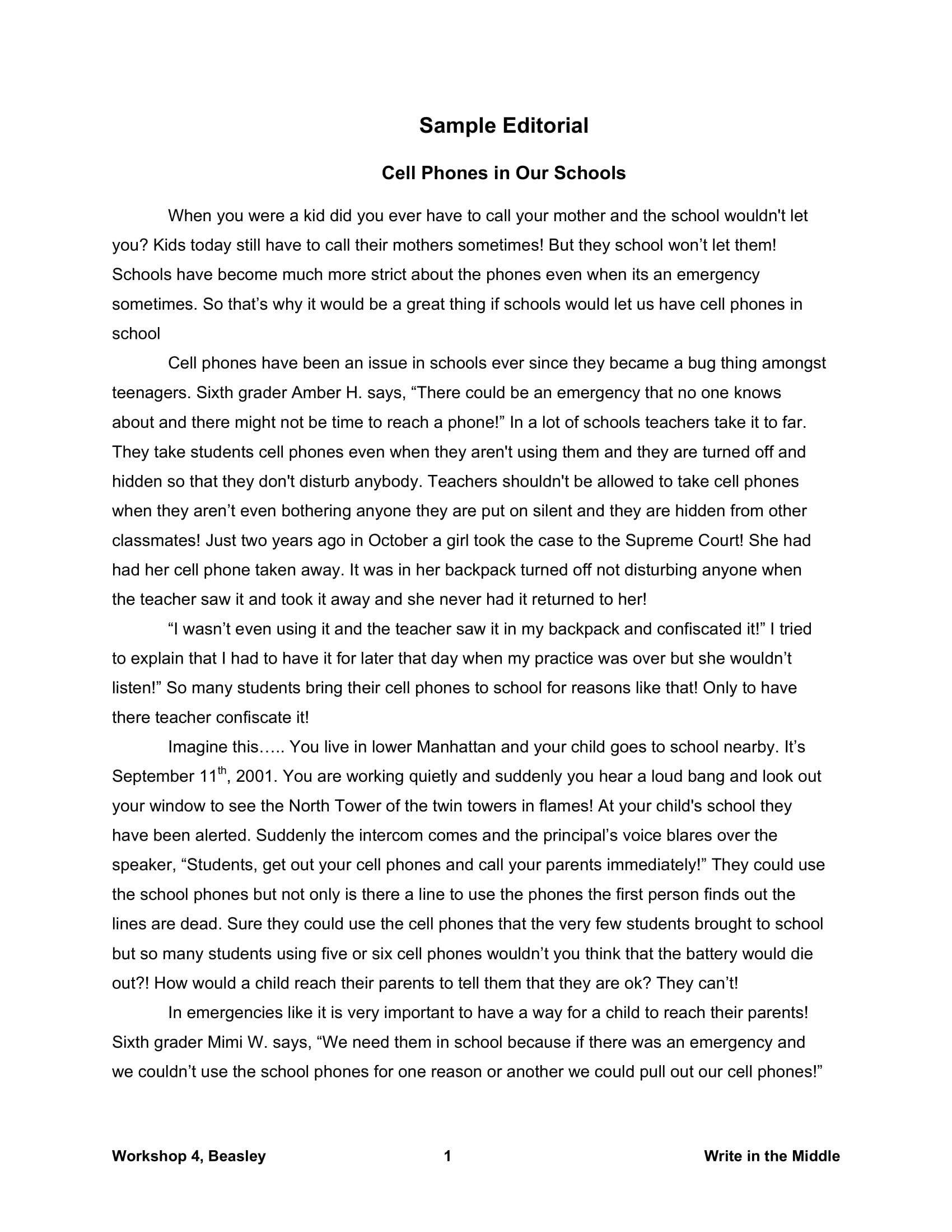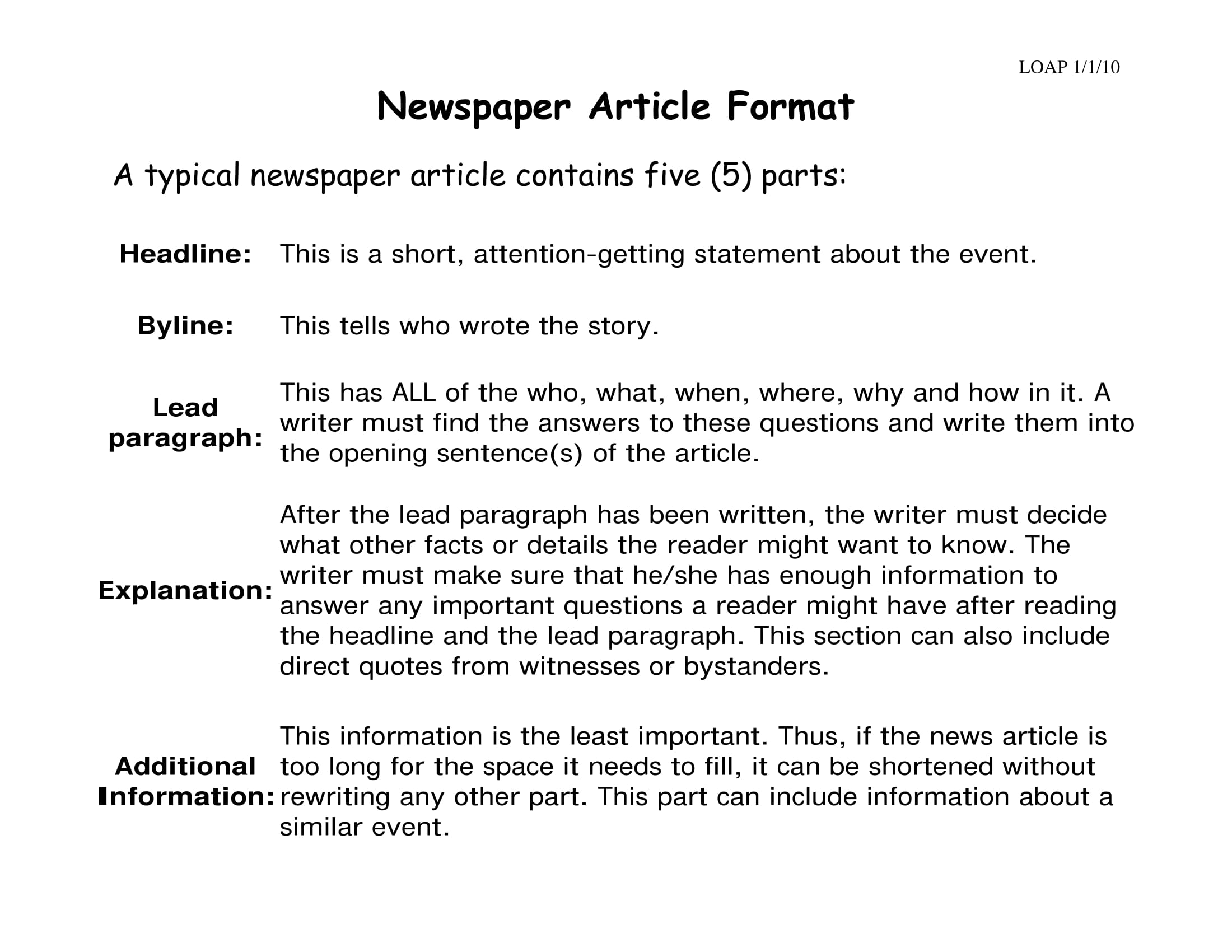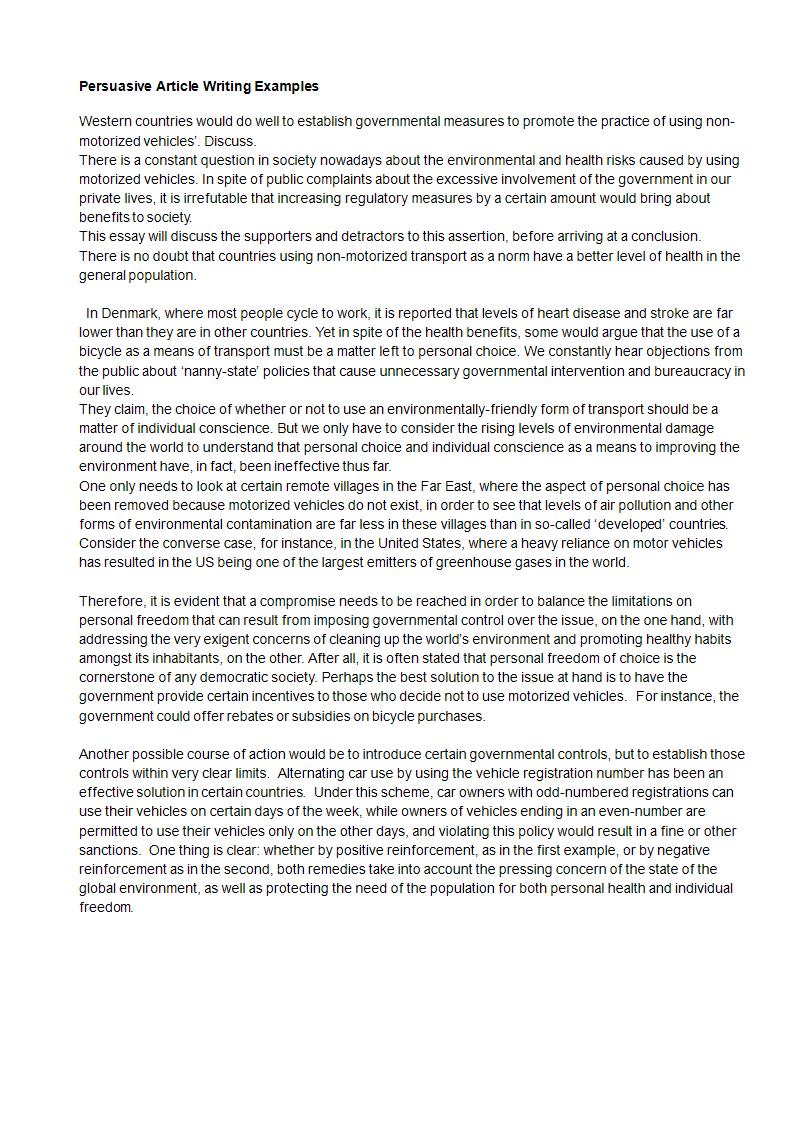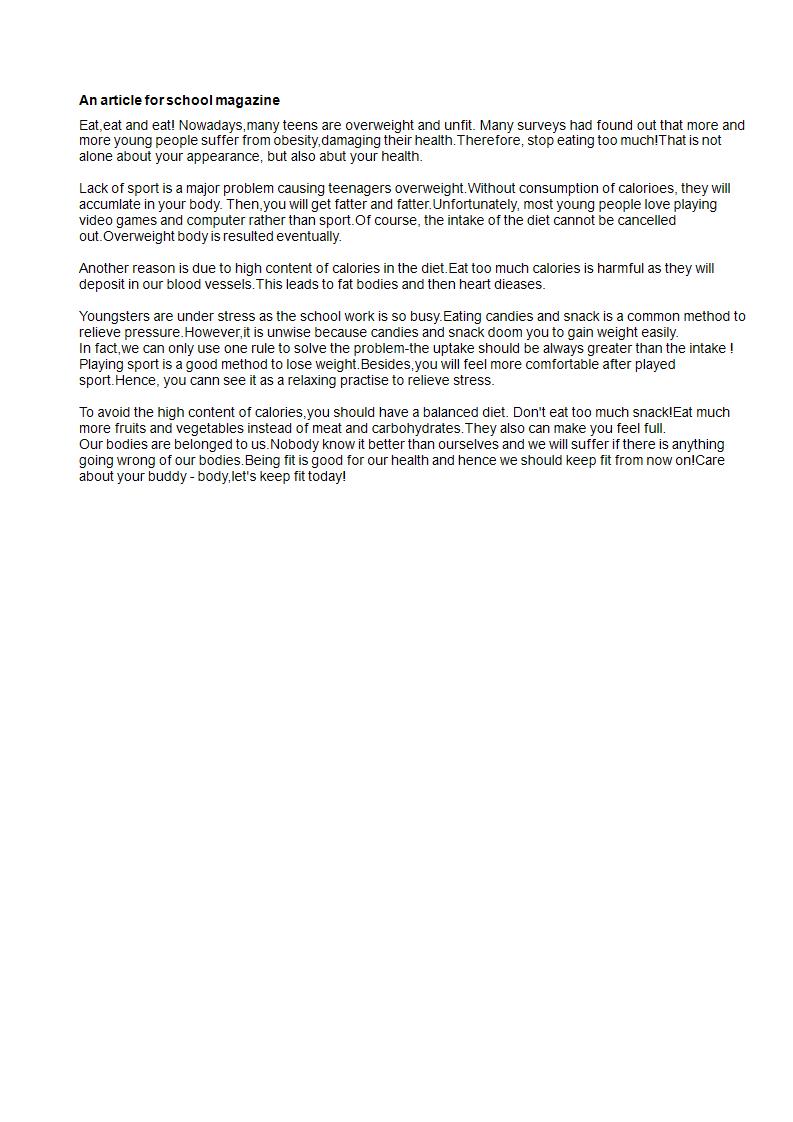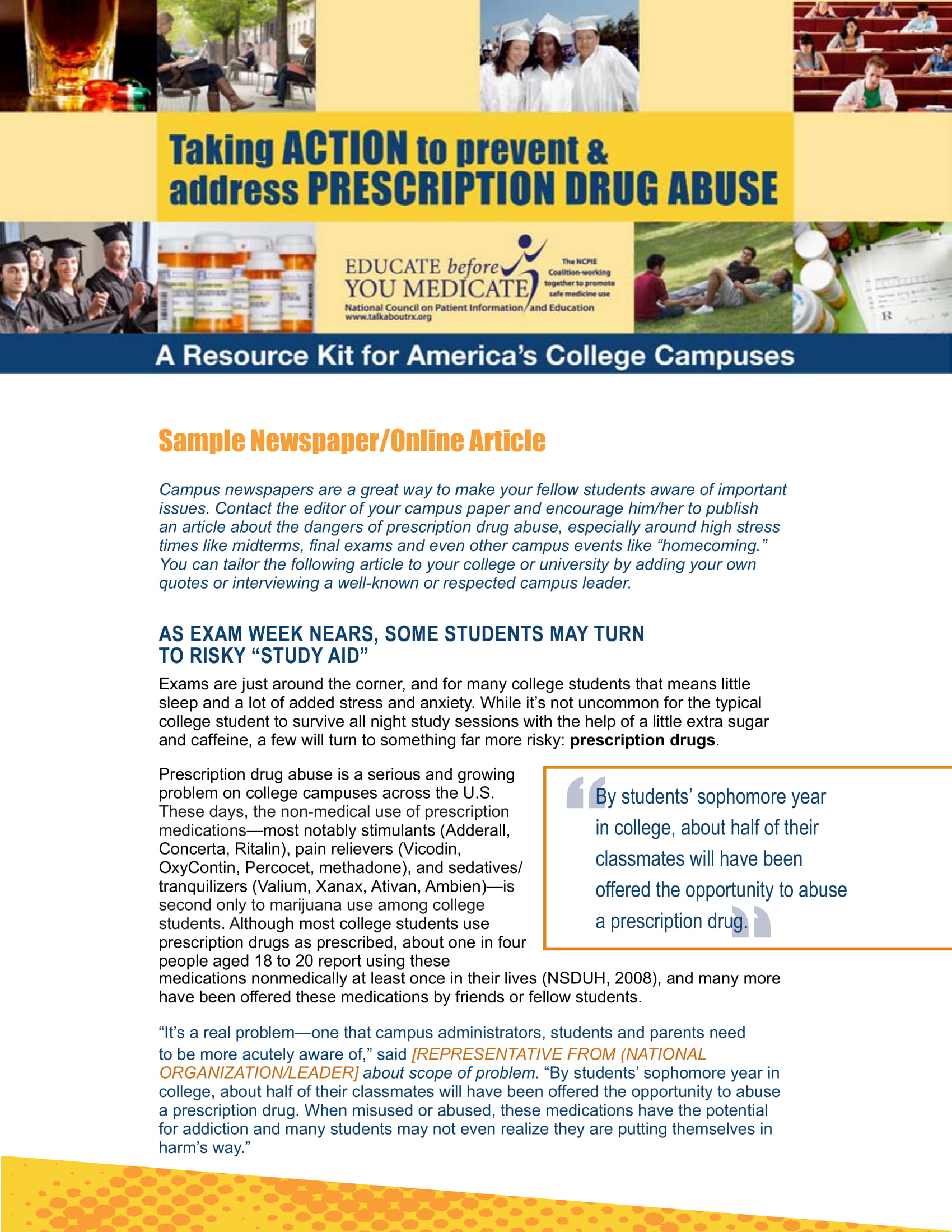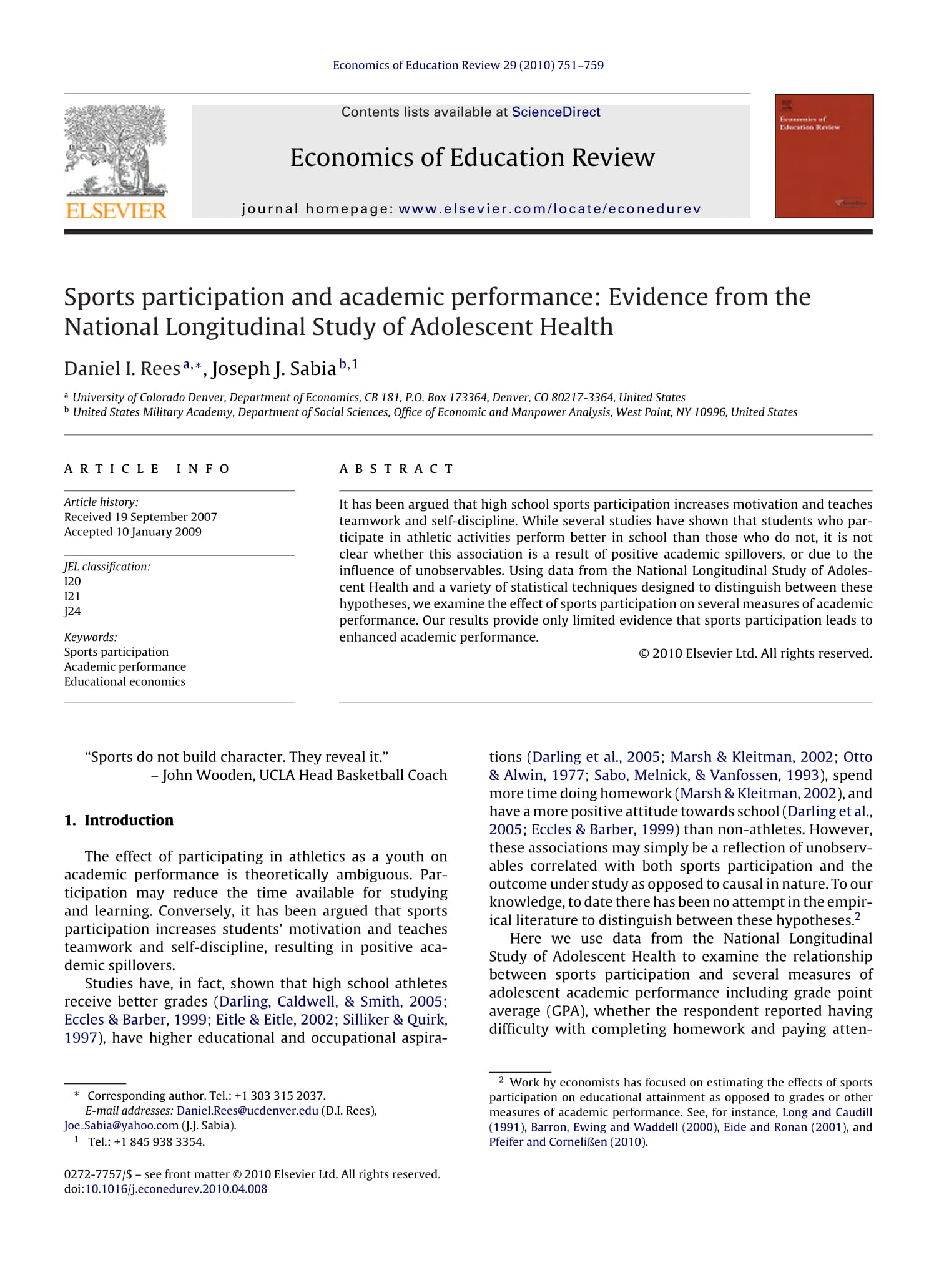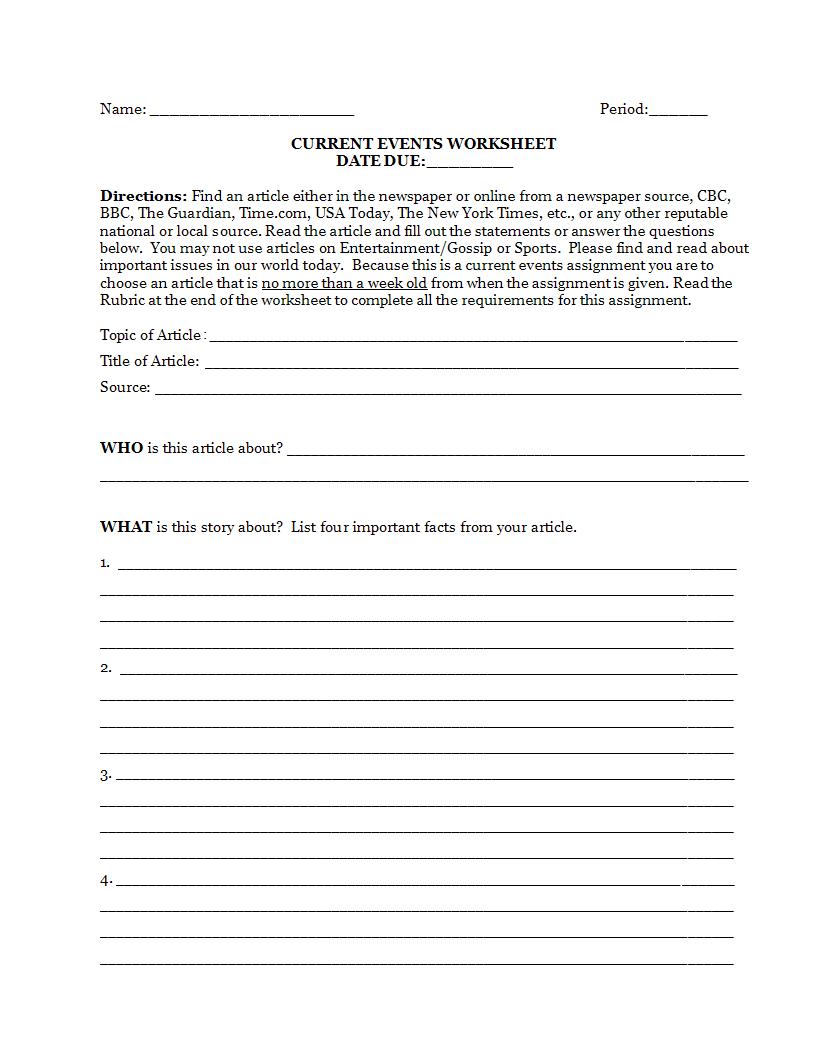34+ Article Writing for Students Examples
It is quite a common activity for students to write something intended for publication. That task can mean writing an article, an entry for a competition, and a review, and all possible write-ups that can be published in an English magazine. It is a good activity to harness the students’ writing skills, creativity, attention to details, and many other skills related to writing that can be beneficial to them with any career they decide to pursue. Article templates can be especially useful in guiding them through the process.
You may think that writing these kinds of write-ups is simply just a waste of time, but contrary to that belief, this exercise helps your creative juice flowing. Aside from that, it can help improve your techniques and styles when it comes to this activity, it can also help you develop a new approach that will improve your outputs, and overall, it improves your writing skills making you a better writer in the end.
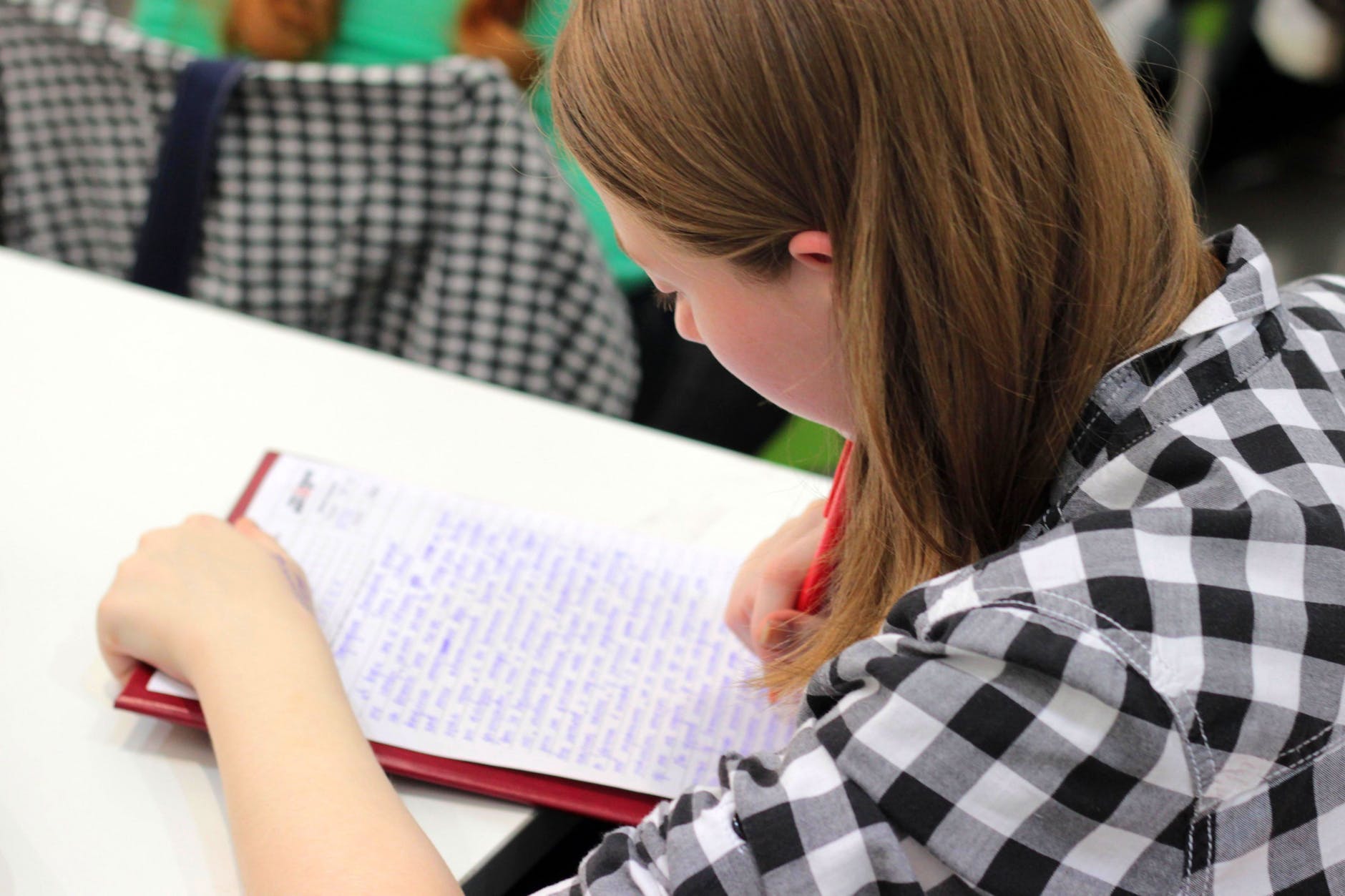
In addition, it can either be formal writing and informal writing depending on the audience. Since the article could possibly be published in a publication, it must be informative writing and must be written in an interesting or entertaining manner in order to captivate the readers’ attention and retain their interest. If you look at it in another perspective, an article is in a less formal style than that of a report since their are no needs for graphs, does not use bullet points and sections.
An article is usually written to spread information, but more than that, it also describes an event, person, experience, etc. It can also be written with the intention of sharing a balanced opinion about a certain topic. Articles are useful sources of information as well as entertainment. In a journalistic point of view, there are quite a few types of articles namely news articles, feature articles, sports articles, editorial articles, and so on. Although these articles use different approaches and have varying standards, the one thing in common about them is that they are based on facts.
Therefore, articles are factual pieces of writing that can inform, entertain, describe, persuade, etc., the readers. As mentioned, the different types of articles may enforce different standards, thus, it can either be a short or lengthy article. In addition to that, articles are the different writings you usually read in a publication.
Structure of Article Writing
An effective article is structured with a captivating introduction that grabs the reader’s attention and briefly introduces the topic. This is followed by detailed body paragraphs that present evidence, examples, and arguments to thoroughly explore the subject. Each section is seamlessly linked with transition words, ensuring a smooth flow. The article concludes with a strong summary that reiterates the key points and reinforces the article’s main message.
Format of Article Writing for Students
Title
- Captivating and Relevant: Choose a title that immediately captures the interest of the reader and gives an idea of what the article is about.
Introduction
- Hook: Start with an attention-grabbing sentence or question to pique the reader’s interest.
- Background Information: Provide a brief overview of the topic or issue being discussed.
- Thesis Statement: Present the main idea or argument of your article, setting the tone for the discussion that follows.
Body
The body is where you delve into the details of your topic. It can be structured in several paragraphs, each with a specific focus.
- Subheadings: Use subheadings to break down the article into manageable sections, each addressing a specific aspect of the topic.
- Supporting Information: Present facts, statistics, examples, or quotes to support your main idea. Ensure the information is accurate and relevant.
- Visual Elements: Where appropriate, include charts, graphs, or images to complement the text and enhance understanding.
Analysis and Discussion
- Personal Insight: Share your analysis or interpretation of the information. This is where you can express opinions or offer a new perspective.
- Counterarguments: If presenting an argument, acknowledge opposing viewpoints and offer counterarguments to show a balanced understanding of the topic.
Conclusion
- Summary: Briefly recap the main points discussed in the article, reinforcing the thesis statement.
- Call to Action: Encourage the reader to think, act, or further explore the topic. This could be a question, a suggestion, or a directive.
- Final Thought: Leave the reader with something to ponder, which could be a thought-provoking statement or a rhetorical question.
Example of Article Writing for Students
Introduction
Have you ever felt like there are not enough hours in the day? You’re not alone. Many students struggle with balancing schoolwork, extracurricular activities, and personal time. This article delves into the significance of time management for students and offers practical tips to help you make the most of your day.
Understanding Time Management
Time management refers to the process of organizing and planning how to divide your time between specific activities. Good time management enables students to work smarter, not harder, so that they get more done in less time, even when time is tight and pressures are high.
Benefits of Effective Time Management
- Improved Performance: By organizing your tasks and having a clear plan, you can focus better and achieve higher quality in your work.
- Reduced Stress: Managing your time well decreases stress levels by removing the pressure of last-minute deadlines and cramming sessions.
- More Free Time: Efficient scheduling means more leisure time to spend with friends and family, pursuing hobbies, or resting.
Strategies for Better Time Management
- Set Clear Goals: Identify what you want to achieve in your study session. Setting SMART (Specific, Measurable, Achievable, Relevant, Time-bound) goals can help keep you focused.
- Create a To-Do List: List everything you need to do, and tackle tasks in order of priority.
- Use a Planner: A planner can help you keep track of deadlines, appointments, and when you plan to complete each task.
- Break Tasks into Smaller Steps: Large tasks can seem overwhelming, but breaking them down into smaller, manageable steps can make them feel more achievable.
- Eliminate Distractions: Identify what commonly distracts you in your study environment and try to eliminate or reduce these distractions.
- Practice Saying No: It’s okay to turn down additional responsibilities if you think it might interfere with your existing commitments and study time.
Conclusion
Time management is a crucial skill that benefits students not just academically but in all aspects of life. By implementing effective time management strategies, you can improve your productivity, reduce stress, and increase your free time. Start by integrating one or two of the strategies mentioned above and gradually incorporate more as you become comfortable. Remember, the goal is to work smarter, not harder.
Article Writing for Students Samples to Edit & Download
- Mental health
- Role of Technology in education
- Global Warming and Climate change
- Diversity in schools
- Impact of Social media on Teenagers
- Study techniques
- Youth activism
- Remote learning
- Financial literacy
- Extracurricular benefits
- Arts in education
- Cyberbullying prevention
- Career exploration
- Community service
- Gender equality
- Peer pressure effects
- Mental health stigma
- Sustainable living
- Youth representation in media
- Critical thinking skills.
Article Writing for Students Examples & Templates
1. Article Review Template
2. Article Summary Template
3. Magazine Article Writing Exercises Example
4. Article Writing Worksheet Example
5. Article Examples for Students
6. Newspaper Article Example
7. Feature Article Writing Worksheet Example
8. Short Editorial Article Example
9. Newspaper Article Format Example
10. Persuasive Article Example
11. Article for School Magazine Example
12. College Newspaper/Online Article Example
13. Sports and Academic Performance Article Example
14. Current Events Article Worksheet Example
Essential Information About Writing Articles for Students
Before you proceed in writing articles, you need to understand what makes it different from other forms of writing first. If you are not able to determine and understand what makes an article an article, you may end writing an essay or another form of writing instead. To help you with that, listed below are essential information about writing articles:
1. The reader is identified
An article is basically a direct conversation with your reader. If a portion in an exam is for you to write an article, the reader may be identified or specified as part of the instructions. That way you can write your article as if you are directly discussing your topic with them. In this sense, the tone, sentences, and words you use in your article must be conversational and easy to understand for your readers. More importantly, you need to remember that the main goal is to cater to your readers; you need to be able to spark their interest and sustain in all throughout the article.
2. It needs to be attention-getting
The main thing that sparks you readers’ interest is your title. Since the title is the first few descriptive writing words your readers will be able to read before the content of the article, it must be attention-getting, meaning, it must be catchy but still has substance. The title of your article must represent the entirety of your article, therefore, it must be accurate but at the same time interesting. After establishing a good title for your article, the content should definitely match what is in the title; it must be accurate and at the same time factual.
3. It has to be interesting
Similarly to what has been discussed above, an article needs to be interesting. Aside from being informative and factual, another goal should be to be able to maintain the readers’ interest in your content. The article must be engaging from start to finish. If you are writing an article for an exam, you must remember that your teacher has to read quite a few articles of the same main topic. You have to think of a way to make your article interesting and memorable, maybe try a new approach, use more engaging sentences; you have to find a way to make you reader want to read your article up to the last word. For example, you can add humor (if appropriate), real-life or made-up examples, or make up quotes.
4. It should be easy to read
One common mistake when writing articles is being overwhelmed by the topic and writing an entire page of monotonous rambles. Although in some cases it is necessary, like in a news or editorial article. However, there are ways when you can make it a breeze to read for your readers; for example, you can use subheadings to break up the text and make clear paragraphs. Make sure that your ideas are organized in a way that your readers can easily comprehend, you can write in a semi-informal, conversational style; however, you may want to abide to the instructions that you will be given. Remember that in an article, there is no need to reiterate the issue or topic, you really only have to explore and expand the topic to encourage your reader to read on.
5. There should be a good ending
The difference with an essay and an article is that in an essay you need to sum up the point you have made in the entire write-up in your conclusion while in an article, there is no need for that; the best way to end your article is to give the reader something to ponder even after reading the entirety of the article. Most of the time, the best endings link back to the starting point in some way. You can ask a question or some powerful or impactful sentence that will make your readers think about what they have read.
Tips to Write Good Articles for Students
By now, you basically have an idea how to write an article. However, there is quite a distinction between a mediocre and good article. To help you produce a good and effective article, listed below are some useful tips in writing good articles:
- Your opening or lead should be easy to read. Meaning it should be simple and short, but at the same time, it should also be able to provide a good overview of the article.
- Keep your paragraphs short and your text visually appealing.
- Provide context on the 5 Ws: Who, What, Where, When, and Why. Occasionally, there might be room for the How provide insightful context.
- Give meaningful substance.
- Show then tell. State or present your main goal, then explain and expand it.
- Learn to quote properly.
- Research, research, research! If there is an opportunity or the topic is already given, always do advance research.
- It’s acceptable to use semi-formal language unlike in an essay.
- Always be accurate and factual.
- Proofread and edit. Always.
Article writing is an exercise commonly practiced by students; it may not be as easy as it sounds, the skills developed with this exercise is as useful as any other skills. It has the ability to help students develop and improve their communication skills as well as harness their creativity. It may even be the starting point of a student in deciding to pursue journalism or any other course that offers the opportunity to write about significant matters. Although it is quite similar to essay writing, it is still different in a way topics are discussed and presented. We hope that you have learned something about article writing especially when this is a reoccurring exercise in your classes. The examples given above are for your own use. May it give you more knowledge about the fact and inspiration.
- Theme or Topic:
- Clearly defined subject matter or theme that unifies the photographs and tells a cohesive story.
- Narrative Structure:
- An intentional narrative structure that guides the viewer through the photo essay, whether chronological, thematic, or conceptual.
- Introduction:
- A strong introduction that captures the viewer’s attention and sets the tone for the photo essay.
- Captivating Images:
- A series of high-quality and visually compelling images that effectively convey the chosen theme or story.
- Variety of Shots:
- A variety of shots, including wide-angle, close-ups, detail shots, and different perspectives, to add visual interest and depth.
- Sequencing:
- Careful sequencing of images to create a logical flow and emotional impact, guiding the viewer through the narrative.
- Captions and Text:
- Thoughtful captions or accompanying text that provide context, additional information, or insights, enhancing the viewer’s understanding.
- Conclusion:
- A concluding section that brings the photo essay to a satisfying close, leaving a lasting impression on the viewer.
- Emotional Resonance:
- The incorporation of images that evoke emotions and connect with the viewer on a personal or empathetic level.
- Viewer Engagement:
- Consideration of the audience, aiming to engage and connect with viewers by addressing universal themes or issues.
How to Write an Article for Students
1. Understand Your Audience:
- Consider the age group and educational level of your target audience.
- Identify their interests, concerns, and common challenges.
2. Choose a Relevant Topic:
- Select a topic that resonates with students’ experiences or addresses their needs.
- Make it interesting and relevant to their daily lives.
3. Create a Catchy Title:
- Craft a title that grabs attention and gives a clear idea of the article’s content.
- Keep it concise but intriguing.
4. Introduction:
- Start with a hook to capture the reader’s interest.
- Provide background information on the topic.
- Clearly state the purpose or main idea of the article.
5. Body Paragraphs:
- Organize your content into logical paragraphs.
- Each paragraph should focus on a specific point or subtopic.
- Use clear and simple language.
- Support your ideas with examples, anecdotes, or relevant information.
- Consider incorporating bullet points or lists for easy readability.
6. Use Student-Friendly Language:
- Avoid jargon and complex vocabulary unless necessary.
- Define any technical terms or concepts to ensure understanding.
7. Include Visuals:
- If applicable, add images, graphs, or infographics to enhance understanding.
- Break up long paragraphs with visuals for better engagement.
8. Encourage Interaction:
- Pose questions or prompts that encourage students to think or share their experiences.
- Consider including a call-to-action, such as inviting comments or discussions.
9. Be Concise and Clear:
- Keep sentences and paragraphs short and to the point.
- Ensure clarity in your explanations.
10. Conclusion:
- Summarize key points.
- End with a strong concluding statement or a call to action.
- Consider suggesting further reading or resources for interested students.
How do you Start an Article for Student Example?
Certainly! The beginning of your article, often referred to as the introduction, should captivate your readers and set the tone for the rest of the piece. Here’s an example of how you might start an article:
Title: “The Power of Curiosity: Unlocking Your Learning Potential”
Introduction:
In a world brimming with information, curiosity acts as the key to unlocking the doors of knowledge. As students, you’re on a perpetual quest for understanding, seeking answers to questions that pique your interest and spark your imagination. Have you ever wondered, though, about the profound impact curiosity can have on your learning journey?
Picture this: You’re sitting in a classroom, the hum of fluorescent lights overhead, and your teacher begins a lesson on a subject that’s not just part of the curriculum, but a gateway to a world of possibilities. It’s in these moments that the flame of curiosity can either flicker or blaze, shaping the way you absorb and apply knowledge. In this article, we’ll delve into the significance of curiosity in the realm of education and explore how nurturing this innate quality can transform your academic experience.
Join me as we embark on a journey to unravel the mysteries of curiosity, discovering its role in fostering a love for learning and its potential to open doors you might not have even known existed.
What is the easiest way to write an article for Students?
1. Choose a Familiar Topic:
- Select a topic you are passionate about or have some knowledge in.
- Familiarity with the subject will make the writing process smoother.
2. Outline Your Ideas:
- Create a simple outline with key points you want to cover.
- Organize these points logically to create a flow in your article.
3. Introduction:
- Start with a hook to grab readers’ attention.
- Clearly state the purpose or main idea of your article.
4. Body Paragraphs:
- Each paragraph should cover a specific point from your outline.
- Use simple language and be concise.
- Support your ideas with examples or evidence.
5. Use Subheadings:
- Break your article into sections using subheadings.
- This helps readers follow your main points easily.
6. Write Simply:
- Use straightforward language. Avoid unnecessary jargon.
- Imagine you are explaining your ideas to a friend.
7. Be Concise:
- Stick to the main points; avoid unnecessary details.
- Short sentences and paragraphs are often more effective.
8. Conclusion:
- Summarize your main points.
- End with a concluding statement or a call to action.
FAQ’s
What does an article look like?
An article typically consists of a title, introduction, body paragraphs with key points, subheadings, and a conclusion. It conveys information, ideas, or opinions in a structured and cohesive manner.
What is the first line of an article?
The first line of an article, known as the hook, aims to capture the reader’s attention. It introduces the topic, sparks interest, and sets the tone for the entire piece.


